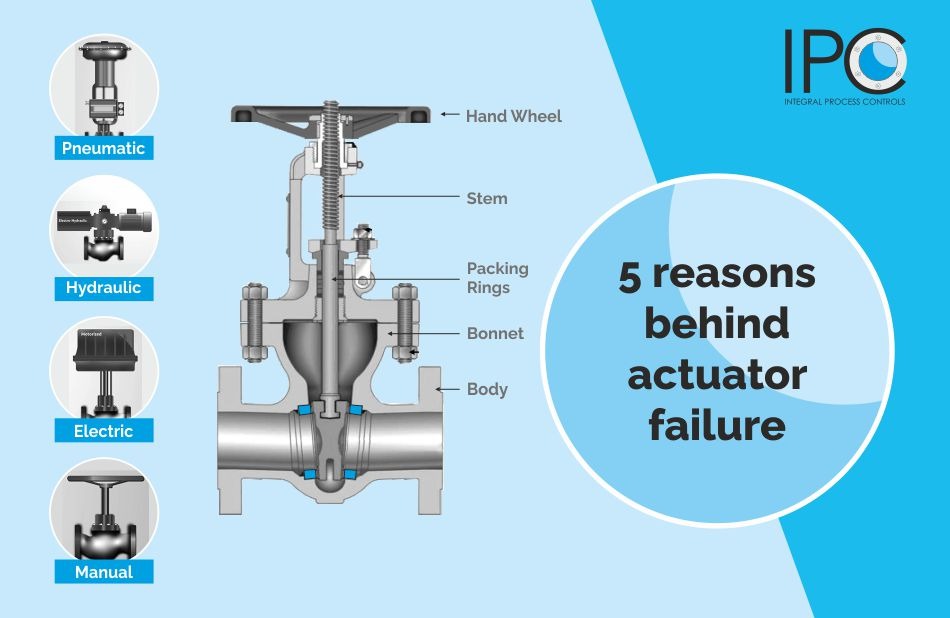Assessing a failed valve actuator is a bit like counseling!
When a counselor assesses a person in trouble, they do not entirely blame the person for the situation. The counselor understands that the problems faced by the person cannot be blamed entirely on the subject’s personality. Factors such as their family and cultural background, living environment, past experiences are also taken into account.
When valve actuators stop working, it may not be because the actuator has faults. The reasons could lie elsewhere.
Ranging from deeper issues with the valve itself to environmental factors can also be the culprits that render your actuators inoperable. Hence, in the case of an actuator failure, we need to think like a counselor and look at all the possible factors responsible.
What could these valve actuator failure factors be?
Some valve-related issues that can cause actuator problems include:
Wrongly sized valve packing
If the packing is too large or too small, it can obstruct the movement of the valve stem, while giving the impression that the actuator is not functioning
Wear and tear of the valve stem
If the valve stem is worn out or the gear is stripped, the actuator cannot properly grip the stem and turn it around.
Too much torque
Setting the right torque requires an experienced person. Often, when fluid media flows through a rotary valve, the motion of fluid can cause additional torque, causing the actuator to stall.
Contamination within the valve
Contaminants such as a plugged filter or water in the airline could hamper the air pressure in pneumatic actuators. Secondly, the seals of pneumatic or hydraulic actuators need to be leak-proof so that the fluid or air does not escape to cause a lack of motive pressure.
Obstructions and lack of power
If the electrical actuators fail without explanation, one of the reasons could be that the power has not reached the actuator. Additionally, forcing the operation by controls or PLC on electrical actuators will eliminate issues such as failed stepper motors, thermal overloads, fuses, etc.
Conclusion
Proper selection and maintenance of the actuator is a critical part of efficient valve operations. In many cases, linear actuators fitted to rotary valves can also fail. Similarly, the right interfacing between the actuator and valve needs to be ensured to avoid actuator failure.

